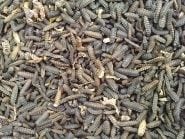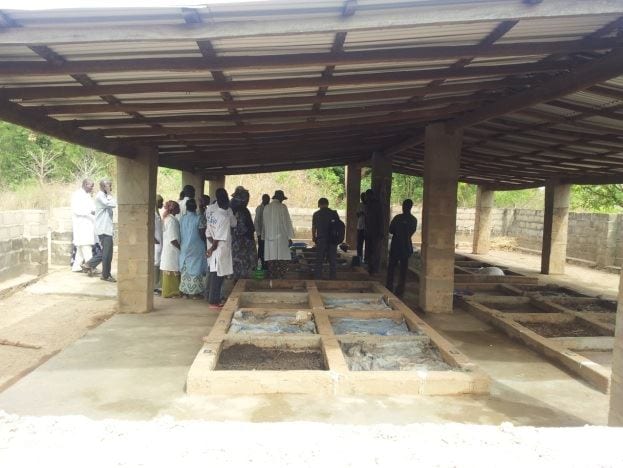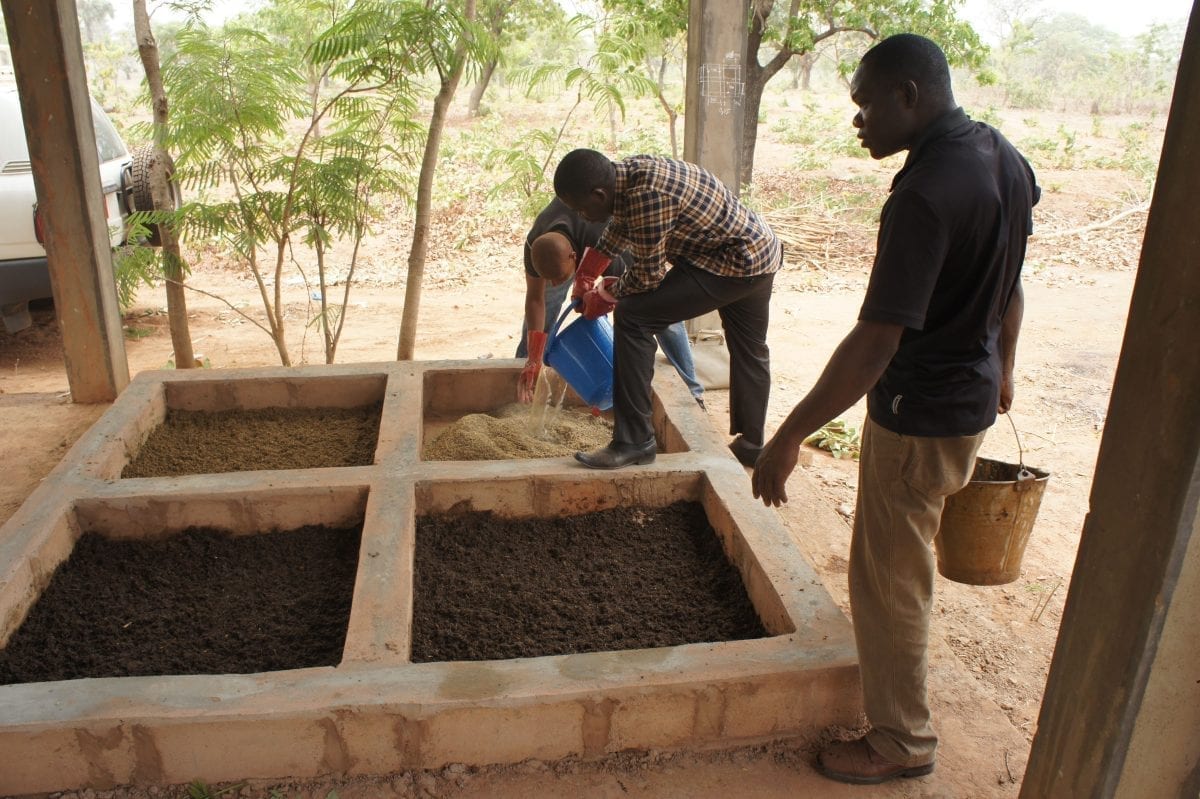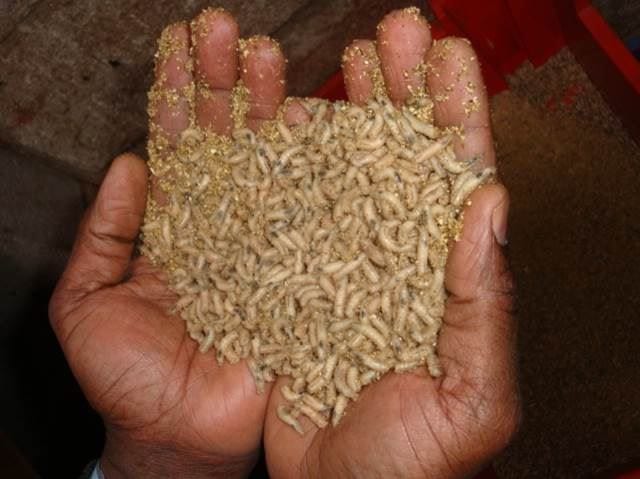Using insects to improve smallholders livestock production and food security in West Africa
Poultry farming is practised by almost all smallholder farmers in West Africa but feed and protein sources are becoming increasingly expensive here, affecting meat and egg production and reducing family income. Fish farmers suffer a similar problem. We are promoting the use of insects, which are a natural food source for poultry and fish, and endorsed by the FAO as a tool to alleviate poverty.
Burkina-Faso
Ghana
Project Overview
So, what’s the problem
Fishmeal and crops such as soya are key protein sources for animal feeds, but they are not ecologically and economically sustainable.
In West Africa, poultry farming is practised by almost all smallholder farmers. Poultry producers suffer from the increasing cost of feed (representing up to 70% of the total production costs), in particular protein sources. Smallholder farmers with scavenging poultry rarely provide the necessary quantity of protein feeds, which affects meat production and eggs, and reduces family income.
Similarly, small-scale fish farmers often feed their fish on natural feed (plankton), green leaves and agricultural by-products. The nutritional value of these feeds is low, resulting in poor yields and less income for the household.
What is this project doing?
The project is partly based on findings from an ongoing EU funded project, PROTEINSECT, where CABI and West African partners developed fly larvae production systems in Mali and Ghana, and carried out nutrition tests.
A solution to develop sustainable household poultry farming and aquaculture systems is to use untapped local, easily available and cheap protein sources. Insects, which are a natural food source of poultry and fish, are one such source, and FAO now strongly recommends the use of insects for human food and animal feed as a tool to alleviate poverty.
This project aims to develop appropriate methods for fly larvae and termite production based on waste material. It will ensure that these innovations are safe and socially, economically and environmentally sustainable. At a later stage, we will validate and implement these innovations with farmers, and disseminate the project’s findings to stakeholders, the general public, the scientific community and policy makers.
Results
During 2019, most research questions were answered and the final year of the project, 2020, will focus mostly on dissemination.
Various methods to produce larvae of two fly species, the domestic fly and the black soldier fly, are now available to smallholder farmers, large-scale farmers, and micro-entrepreneurs interested in producing fly larvae as commercial products and several of these are being trained and supported in producing fly larvae.
Evaluations of the economic profitability of the different production systems show that fly larvae production can be profitable provided that rearing substrates are obtained at little, or no, cost and that the rearing residues can be sold as organic fertiliser. Residues obtained from animal manure can be applied directly to soil, whereas those from plant-based substrates require further composting. Considering that there is an increasing demand for high-quality organic fertilisers in West Africa, a cooperative society has been developed in Benin to produce compost from fly larvae production residues and fly larvae as a by-product.
In parallel, studies have been completed on the use of termites as poultry feed for smallholder farmers. Sustainable collection techniques based on trapping systems have been developed and are now being disseminated in regions where farmers are still collecting termites from the wild.
Further studies on the nutritional quality of fly larvae and termites as poultry feed have been investigated, and confirmed that both insects are highly suitable to feed both traditional and exotic poultry breeds. Similar tests have been done for fish but a potential health issue has been identified for catfish fed with fly larvae and this study is presently being repeated. A new experiment is presently being conducted to assess whether young fly larvae can be given to very young fish larvae as protein source and first results are very encouraging.
Progress has also been completed in assessing potential health issues, confirming that no health problem for consumers has been identified and that the production of house fly larvae at small scale does not increase fly populations in the surroundings. However, a study on the social acceptability of the use of fly larvae as animal feed has shown that, in some cities, a high number of urban consumers are reluctant to consume chicken fed with larvae, suggesting that efforts need to be made to communicate the benefits and safety of the technique.
The project also has a strong element of learning and capacity building. Three PhD thesis and six MSc theses were successfully defended in 2019. In total, the project will generate 12 PhD and 30 MSc theses. So far, the project has also generated 30 papers, either published or accepted for publication in peer reviewed journals. In addition, leaflets, technical notes, videos and other dissemination material have been produced in the three countries.
For more information visit the project website here.
Related project blogs:
Project Manager

Partners
Université Polytechnique de Bobo-Dioulasso (Burkina Faso)
Fish for Africa (Ghana)
Council for Scientific and Industrial Research (Ghana)
Institut National des Recherches Agricoles du Bénin (Bénin)







